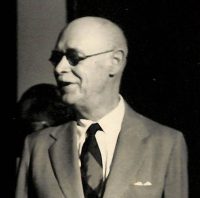Martial Law: High Commissioner Sayre had recommended to President Roosevelt early in the summer that if war broke out, he should declare martial law in the Philippines. This the President had a right to do, in case of invasion. Quezon also had that right to be exercised in concurrence of the National Assembly. Sayre when questioned on this subject by Quezon gave an “evasive” answer. When MacArthur became Supreme Commander in July he found Sayre’s dispatches to President Roosevelt with such a recommendation. MacArthur said to Quezon that he would make no such recommendation to over-ride the Commonwealth Government; said he (MacArthur) was not in favor of setting aside the civil government in time of war. Quezon had told Sayre that if this were done, he would resign as President and then could not answer for the consequences. Martial law was thus never proclaimed in the Philippines during the war. “when I was in the agony of indecision, I thought the responsibility too great, and discussed with MacArthur, whether martial law should not be proclaimed, but he would not hear of it. When we got to Corregidor, MacArthur joined with me in my recommendation to Roosevelt that the independence of the Philippines be recognized immediately by the United States.” However, General Chynoweth had set up a sort of martial law in the Visayas. When Quezon got down to the Visayas himself, he found that the army had overridden the civil government, the police and the courts. “I was so angry that I abused General Chynoweth, poor fellow, for an hour and a half.” MacArthur revoked this imposition of martial law as soon as Quezon reported it to him by radio.

Francis Burton Harrison
(December 18, 1873 — November 21, 1957) , former congressman, Governor-General of the Philippines, and adviser to Philippine presidents.
All Posts